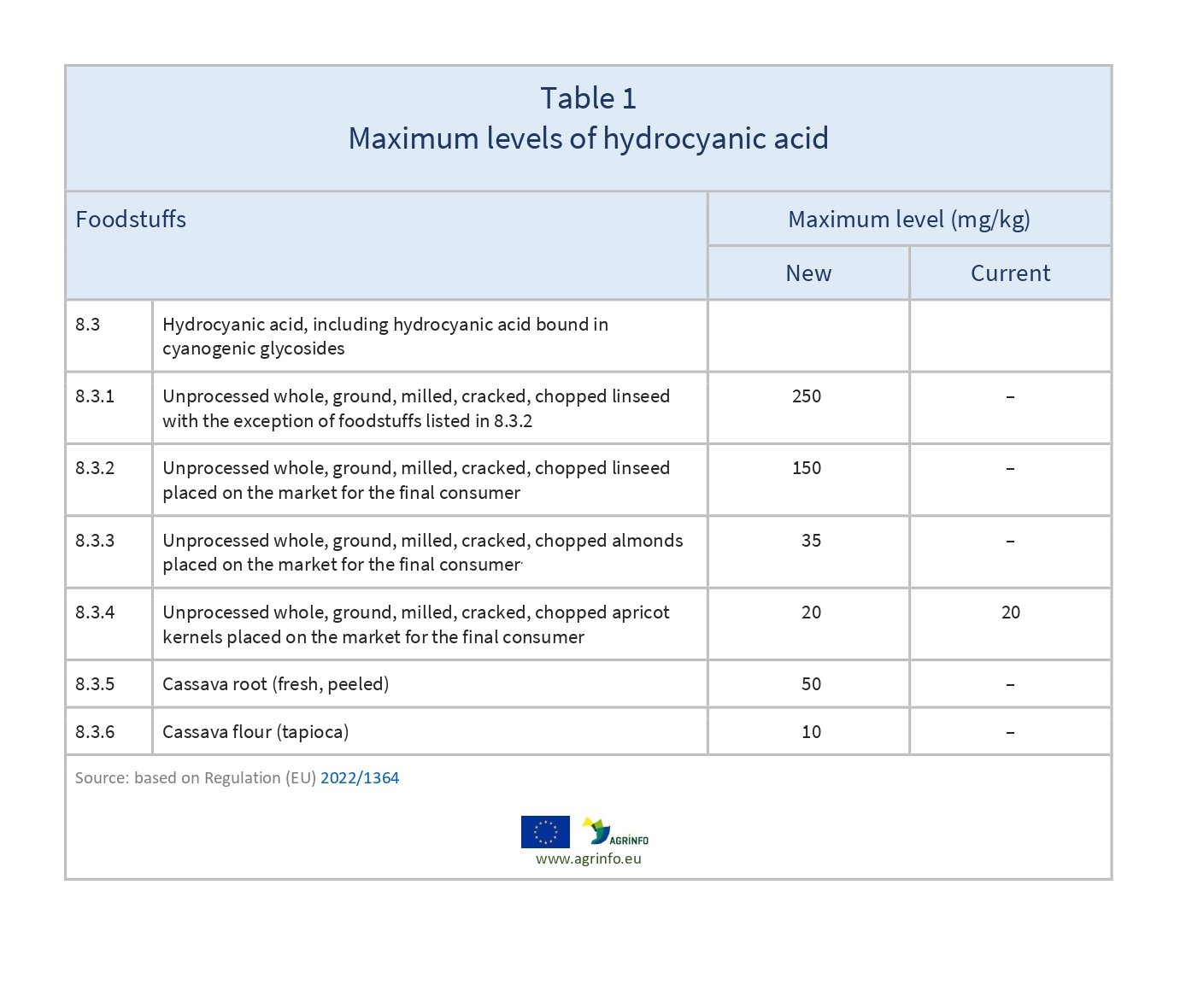Maximum levels of hydrocyanic acid
- Contaminants
Summary
On 4 August 2022, the Commission published Commission Regulation (EU) 2022/1364 establishing maximum levels for hydrocyanic acid for linseed, almonds and cassava.
New maximum levels for hydrocyanic acid on linseed, almonds and cassava apply from 1 January
Commission Regulation (EU) 2022/1364 of 4 August 2022 amending Regulation (EC) No 1881/2006 as regards maximum levels of hydrocyanic acid in certain foodstuffs
Update
On 4 August 2022, the Commission published Commission Regulation (EU) 2022/1364 establishing maximum levels for hydrocyanic acid for linseed, almonds and cassava.
Impacted Products
linseed, almonds, cassava
What is changing?
The Regulation introduces maximum levels as set out in Table 1 (and maintains the existing level for apricot kernels).
Why?
In 2019, EFSA updated its scientific opinion on health risks related to the presence of cyanogenic glycosides (bioactive plant products derived from amino acids) in foods, establishing an acute reference dose (ARfD) of 20 µg cyanide per kg body weight (EFSA CONTAM Panel 2019). It found that if certain foods are consumed that contain high levels of cyanogenic glycosides, such as linseed, almonds and cassava, the ARfD for cyanide could be exceeded.
Hydrocyanic acid is not normally present in these foods at toxicologically relevant levels, but when these foods are chewed or processed, cyanogenic glycosides form a mixture that has health risks. When linseed is ground, the bioavailability of hydrocyanic acid is greater. The Commission therefore considers that maximum levels must be set for these foodstuffs.
Timeline
Date of publication: 8 August 2022
Date of application: 1 January 2023
What are the major implications for exporting countries?
Increased controls of hydrocyanic acid should be anticipated in 2023 due to these new maximum levels, and a number of findings of high levels of cyanide in linseed, almonds and apricot kernels (seven RASSF notifications to September 2022).
Recommended Actions
Suppliers of linseed, almonds, cassava and apricot kernels must verify the presence of hydrocyanic acid in products destined for the EU market, and ensure compliance with the new maximum levels by 1 January 2023.
Background
This Regulation amends the Annex of Commission Regulation (EC) No1881/2006 (subsequently replaced by Regulation (EU) 2023/915) that sets maximum levels for certain contaminants in foodstuffs.
Resources
Commission Regulation (EU) 2023/915 of 25 April 2023 on maximum levels for certain contaminants in food and repealing Regulation (EC) No 1881/2006
EFSA CONTAM Panel (2019) Evaluation of the health risks related to the presence of cyanogenic glycosides in foods other than raw apricot kernels. EFSA Journal, 17(4): 5662.
Sources
Commission Regulation (EU) 2022/1364
Tables & Figures

.
Disclaimer: Under no circumstances shall COLEAD be liable for any loss, damage, liability or expense incurred or suffered that is claimed to have resulted from the use of information available on this website or any link to external sites. The use of the website is at the user’s sole risk and responsibility. This information platform was created and maintained with the financial support of the European Union. Its contents do not, however, reflect the views of the European Union.
